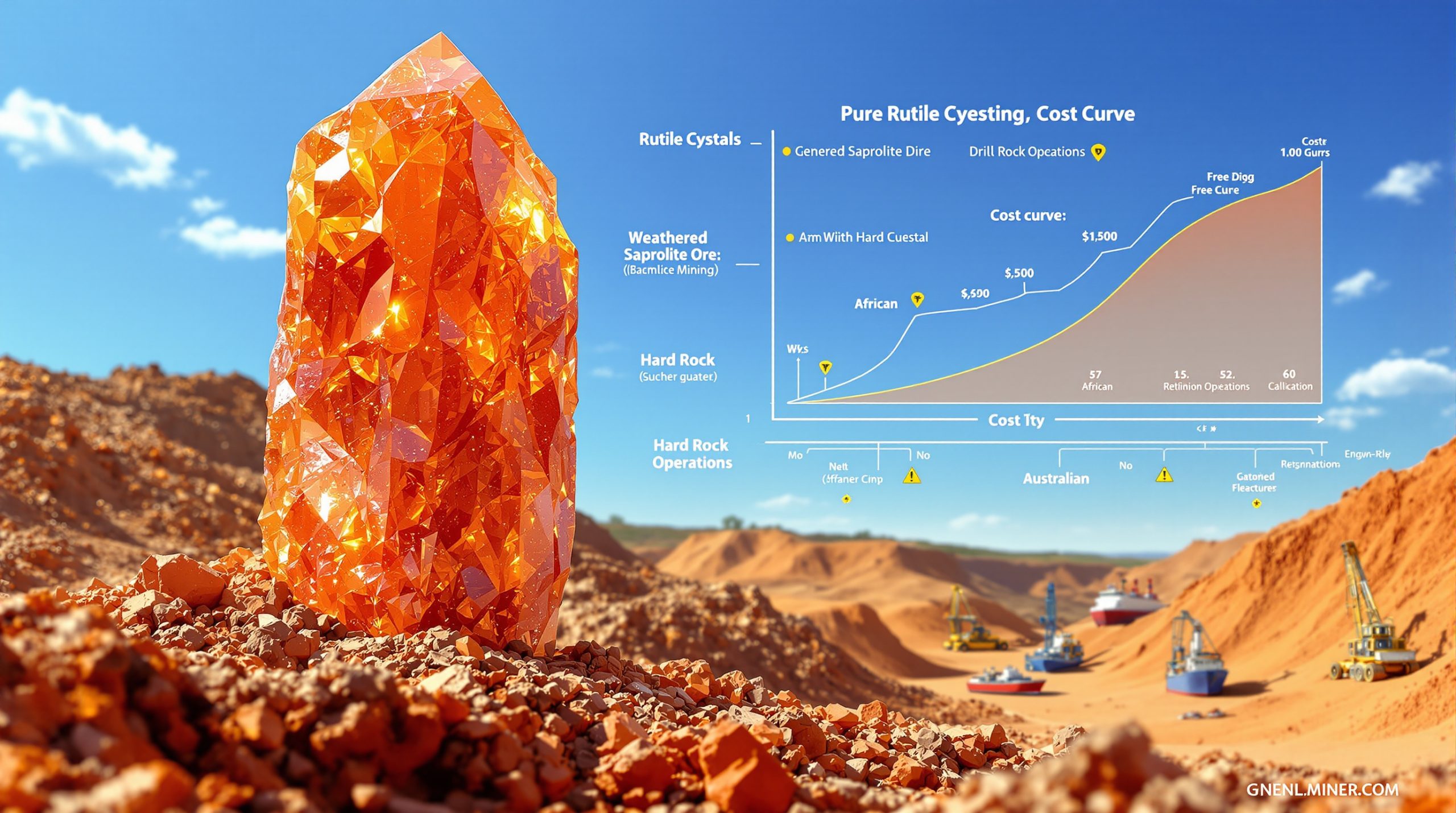What's Driving Gold Prices to Record Highs in 2025?
Gold has experienced a remarkable transformation in 2025, with prices soaring to unprecedented levels above $3,760 per ounce. This isn't merely a typical market fluctuation but signals a fundamental shift in investor perception of precious metals amid global economic uncertainty. Several key factors have converged to create this extraordinary market environment.
Central bank diversification strategies have accelerated significantly in recent years, as institutions seek to reduce dependence on traditional reserve currencies. These official sector purchases represent a strategic reallocation of national reserves toward hard assets.
Geopolitical tensions continue to intensify across multiple regions, creating legitimate supply chain security concerns that extend beyond precious metals into various commodity markets. The all‐time high analysis confirms the resulting uncertainty drives institutional demand for safe-haven assets.
Persistent inflation pressures remain despite aggressive central bank policy interventions, eroding purchasing power and encouraging portfolio managers to seek inflation hedge prices with proven historical performance during similar economic conditions.
Currency devaluation concerns have prompted institutional investors to reconsider portfolio allocations, with many increasing precious metals exposure as a strategic hedge against potential monetary instability.
This robust gold price momentum has created significant ripple effects throughout the mining sector, with companies rapidly pivoting their strategies to capitalize on favorable market conditions while institutional investors return to the space after years of underallocation.
How Are Mining Companies Transforming Their Business Models?
The Strategic Pivot to Production-Focused Strategies
Mining companies have undergone a fundamental strategic shift, moving decisively away from pure exploration models toward production-focused approaches. This transformation reflects evolving market demands and changing investor expectations.
Companies increasingly prioritize projects with clear paths to production and cash flow generation, recognizing that self-funded growth creates superior shareholder returns while reducing financing risks in volatile capital markets.
Management teams emphasize staged development approaches that minimize dilution while maintaining growth trajectories, carefully balancing capital requirements against project economics to optimize shareholder value.
Exploration programs increasingly target brownfield opportunities near existing infrastructure, reducing development timelines and capital intensity while improving project economics through shared facilities and operational synergies.
Strategic mergers aim to create operational synergies and development efficiencies through complementary asset portfolios, technical expertise integration, and optimized capital allocation across multiple projects.
This evolution represents more than temporary market opportunism—it signals a structural change in how mining companies approach value creation and investor relations in response to institutional demands for demonstrable economic viability.
Infrastructure Advantages Create Competitive Positioning
Companies with existing infrastructure access have gained significant competitive advantages in the current market environment, creating distinctive positioning opportunities for assets with established facilities.
Reduced capital requirements for project development translate directly to improved project economics and reduced financing risk, particularly important during periods of elevated construction and equipment costs.
Accelerated timelines from discovery to production enable companies to capitalize on favorable commodity prices while reducing execution risk through shortened development schedules and established operational frameworks.
Lower environmental footprints through infrastructure sharing reduce permitting challenges and regulatory hurdles, facilitating faster approvals while demonstrating environmental stewardship through efficient resource utilization.
Operational synergies improve project economics through shared facilities, technical expertise, and administrative functions, creating sustainable competitive advantages through reduced costs and optimized capital efficiency.
These advantages have become increasingly important as investors seek companies capable of bringing production online quickly to capitalize on favorable gold prices while minimizing execution risk and capital requirements.
What Makes Near-Term Producers Attractive to Investors?
Cash Flow Generation Without Excessive Dilution
The ability to generate operational cash flow while minimizing shareholder dilution has become a key differentiator for mining companies in today's market environment.
Self-funded exploration and development programs reduce financing risks and market dependence, providing operational stability through market cycles while maintaining project advancement regardless of capital market conditions.
Operational revenue supports continued growth without excessive equity issuance, protecting shareholder value while enabling systematic expansion through internally generated capital rather than dilutive financings.
Staged development approaches optimize capital allocation and project economics by aligning development schedules with cash flow generation, creating sustainable growth trajectories that balance current operations with future expansion.
Dividend potential creates additional investor incentives beyond simple resource exposure, attracting income-oriented investors while demonstrating management's commitment to shareholder returns and sustainable business models.
This focus on financial discipline represents a significant evolution from previous market cycles, where growth at any cost often dominated corporate strategies at the expense of shareholder returns.
Experienced Management Teams Drive Operational Excellence
Investors increasingly differentiate between companies based on management expertise and track records, recognizing the critical importance of operational execution in mining success.
Proven ability to navigate regulatory environments and permitting processes reduces development risks and timeline uncertainties, particularly valuable in jurisdictions with complex approval frameworks and stakeholder engagement requirements.
Technical expertise in metallurgy and processing optimization improves operational performance and project economics, creating competitive advantages through enhanced recovery rates and reduced operating costs.
Capital markets experience enables efficient financing strategies that minimize dilution while ensuring adequate funding for development programs, balancing growth opportunities against shareholder value preservation.
Stakeholder engagement capabilities maintain social license to operate through proactive community partnerships and environmental stewardship, reducing operational risks while creating sustainable development frameworks.
These qualitative factors have gained importance as investors seek companies capable of executing complex development plans while maintaining operational discipline and regulatory compliance.
Which Gold Companies Are Successfully Implementing Production Strategies?
Australian Producers Lead With Multi-Asset Approaches
Australian gold companies have demonstrated particular success with multi-asset production strategies that combine operational stability with continued growth opportunities.
Alkane Resources operates across multiple jurisdictions with established production at Tomingley while developing the Boda project, creating a balanced portfolio that generates current cash flow while maintaining exploration upside.
Production platforms provide cash flow stability while supporting exploration programs, reducing financing risks and market dependence while maintaining growth potential through systematic resource expansion.
Diversified approaches include gold equivalent production with strategic investment insights and strategic byproduct exposure, providing commodity price resilience while accessing critical materials markets through integrated operations and processing facilities.
Regional consolidation creates operational synergies and development efficiencies through shared infrastructure, technical expertise, and administrative functions, optimizing capital allocation while reducing operational costs.
These companies exemplify the production-focused strategies that attract institutional investor interest, with established cash flow supporting continued development while providing exposure to both precious metals and critical materials themes.
North American Explorers Transition to Development Models
Canadian and American exploration companies have increasingly pivoted toward development-focused models that emphasize clear production pathways and economic viability.
Amex Exploration implements dual-path strategies combining near-term production with continued exploration, creating balanced portfolios that generate operational cash flow while maintaining resource growth potential.
New Found Gold acquired Maritime Resources to gain immediate production capabilities, demonstrating strategic consolidation approaches that combine exploration upside with operational cash flow generation.
P2 Gold systematically advances the Gabbs project through established development stages, creating investor confidence through methodical progression and clear production milestones.
Revival Gold pursues dual-asset strategies for geographic diversification, reducing single-project risk while maintaining focus on established mining jurisdictions with supportive regulatory frameworks.
This transition reflects changing investor expectations and market realities, with companies emphasizing clear production pathways and established development progression to build investor confidence.
How Are Mergers and Acquisitions Reshaping the Gold Sector?
Strategic Consolidation Creates Scale and Efficiency
The gold sector has experienced accelerating consolidation activity, with companies pursuing strategic combinations to achieve competitive advantages and operational efficiencies.
Operational scale through infrastructure sharing and technical expertise integration creates cost advantages and improved project economics, particularly important during periods of elevated input costs and competitive labor markets.
Geographic diversification across multiple mining jurisdictions reduces political and regulatory risks while providing access to diverse geological opportunities and development timelines.
Enhanced market positioning and institutional investor appeal results from increased scale and operational diversity, attracting investment from larger funds with minimum market capitalization requirements.
Capital efficiency improvements through shared development costs and administrative functions optimize resource allocation while reducing overhead expenses, creating sustainable competitive advantages.
This trend reflects both opportunistic valuations and strategic necessity for optimal project development and operational efficiency in an increasingly competitive landscape.
Partnership Structures Beyond Traditional Mergers
Beyond traditional mergers, companies have implemented innovative partnership structures that provide operational flexibility while maintaining strategic focus.
Joint ventures for shared development risks and capital requirements enable companies to access projects beyond individual financial capacities while maintaining operational involvement and technical influence.
Infrastructure sharing agreements optimize existing assets through cooperative utilization and cost sharing, reducing capital intensity while improving operational efficiency through maximized capacity utilization.
Technical collaboration initiatives leverage specialized expertise across organizational boundaries, creating knowledge transfer opportunities while improving operational performance and development efficiency.
Royalty and streaming arrangements provide capital-efficient financing while maintaining operational control, creating flexible funding mechanisms that align investor interests with operational success.
These flexible approaches provide capital efficiency while maintaining operational autonomy across multiple development projects and commodity exposures, creating value through strategic collaboration rather than complete integration.
What Role Do Geopolitical Factors Play in Gold Project Valuation?
Supply Chain Security Drives Strategic Value
Geopolitical considerations increasingly influence mining investment decisions, creating additional value drivers beyond traditional economic metrics.
Supply chain security concerns create additional value drivers for appropriately positioned companies, particularly those operating in stable jurisdictions with established regulatory frameworks and rule of law traditions.
Critical mineral designations provide strategic advantages through government support programs, including preferential permitting treatment, infrastructure funding, and offtake arrangements that reduce development risks.
Institutional investors seek domestic supply chain resilience amid global uncertainties, allocating capital toward projects that contribute to national security objectives and strategic resource independence.
Regional tensions highlight the importance of stable mining jurisdictions with consistent regulatory environments and established political frameworks, reducing operational risks while improving investment certainty.
These factors extend beyond traditional economic considerations, creating premium valuations for projects in secure jurisdictions with supportive regulatory frameworks and established infrastructure.
Jurisdictional Advantages Gain Prominence
Projects in established mining jurisdictions with supportive regulatory frameworks have gained particular prominence, reflecting growing awareness of location-based risk factors.
North American operations benefit from supply chain security considerations, attracting strategic investment focused on domestic resource development and critical materials independence.
Australian projects leverage established mining infrastructure and expertise, reducing development risks while accessing technical capabilities and operational knowledge built through decades of industry experience.
European developments align with strategic autonomy initiatives, benefiting from policy support and funding programs designed to reduce import dependence and secure access to essential materials.
South American operations in stable jurisdictions maintain attractiveness through established mining traditions and geological prospectivity, particularly those with consistent regulatory histories and investment protection frameworks.
These jurisdictional advantages translate into tangible benefits through reduced permitting timelines, available skilled labor, and existing infrastructure networks that support efficient project development.
How Are Environmental and Social Factors Influencing Development Strategies?
ESG Integration Creates Operational Excellence
Environmental, social, and governance considerations have evolved from compliance requirements to operational excellence drivers, creating competitive advantages through stakeholder integration and environmental stewardship.
Community partnership approaches build long-term social license while supporting local economic development, reducing operational risks through proactive engagement and benefit-sharing arrangements.
Carbon footprint reduction initiatives simultaneously improve environmental performance and operating costs, particularly through renewable energy integration and energy efficiency programs that reduce both emissions and expenses.
Supply chain transparency strengthens stakeholder relationships while providing competitive differentiation, creating market advantages through responsible sourcing practices and traceability mechanisms.
Proactive regulatory engagement accelerates permitting processes and reduces development risks, demonstrating commitment to responsible development while building regulatory relationships based on transparency and compliance.
Leading companies demonstrate how integrated stakeholder engagement and environmental stewardship create competitive advantages through reduced operational risks and enhanced community support.
Sustainability Initiatives Attract Institutional Investment
Mining companies with robust sustainability programs increasingly attract institutional investment, reflecting changing capital allocation criteria and environmental performance expectations.
ESG-focused funds allocate capital to companies with demonstrated sustainability performance, creating financial incentives for environmental leadership and stakeholder integration beyond compliance requirements.
Institutional investors incorporate sustainability metrics into valuation models, recognizing the financial materiality of environmental and social factors through enhanced risk assessment and long-term performance expectations.
Strategic investors seek companies with strong community relationships and environmental practices, identifying operational resilience through stakeholder support and regulatory positioning.
Government support programs favor projects with superior sustainability profiles, creating competitive advantages through preferential permitting treatment and infrastructure funding opportunities.
This alignment between sustainability performance and capital access creates powerful incentives for companies to implement comprehensive ESG programs that go beyond compliance to create strategic advantages.
What Challenges Do Near-Term Producers Face?
Cost Inflation Affects Development Economics
Despite favorable gold prices, mining companies face persistent cost pressures that require careful management and strategic planning.
Equipment and materials inflation impacts capital expenditure budgets, requiring value engineering and phased development approaches to maintain project economics despite elevated construction costs.
Labor shortages in key mining regions drive wage increases and recruitment challenges, creating operational constraints while increasing training and retention expenses across technical and operational roles.
Energy costs fluctuate with global market dynamics, introducing budgeting uncertainties while encouraging renewable energy integration to reduce both emissions and price volatility exposure.
Supply chain disruptions create procurement challenges and timeline extensions, requiring proactive sourcing strategies and inventory management to maintain development schedules and operational continuity.
These cost factors require careful management through value engineering, phased development approaches, and strategic supplier relationships to maintain project economics and development timelines.
Permitting Timelines Create Execution Risk
Regulatory approval processes remain significant challenges for development projects, requiring proactive management and stakeholder engagement strategies.
Environmental assessment timelines extend development schedules, creating financing challenges and market timing risks that require careful capital planning and stakeholder communication.
Community consultation requirements demand comprehensive engagement strategies that address diverse stakeholder concerns while building sustainable partnerships based on mutual benefit and transparent communication.
Changing regulatory frameworks create compliance uncertainties and design challenges, requiring flexible development approaches and ongoing regulatory monitoring to maintain compliance through evolving requirements.
Political considerations influence approval processes in some jurisdictions, introducing timeline uncertainties and strategic positioning requirements beyond technical project merits.
Companies that demonstrate regulatory competence through proactive stakeholder engagement and environmental stewardship gain competitive advantages through reduced permitting risks and accelerated development timelines.
How Can Investors Identify Promising Near-Term Production Opportunities?
Key Indicators of Development Success
Several factors distinguish companies with superior development potential, providing evaluation frameworks for identifying promising investment opportunities.
Existing infrastructure access reduces capital requirements and accelerates timelines, providing competitive advantages through shared facilities and established operational frameworks that improve project economics.
Established metallurgy with proven recovery rates and processing methods reduces technical risk and improves operational predictability, particularly important for complex mineralogy or unconventional processing requirements.
Experienced management teams with demonstrated development expertise increase execution probability and operational performance, reducing timeline uncertainties while improving stakeholder engagement and regulatory navigation.
Strategic jurisdictional positioning in supportive regulatory environments reduces permitting risks and timeline uncertainties, particularly valuable during periods of increasing regulatory complexity and stakeholder expectations.
Clear financing strategies that minimize dilution while ensuring adequate funding demonstrate capital discipline and shareholder alignment, particularly important during development transitions with significant funding requirements.
These indicators help investors identify companies capable of successfully transitioning from exploration to production while minimizing execution risks and maximizing return potential.
Risk Mitigation Through Portfolio Diversification
Investors can manage development risks through strategic diversification approaches that balance opportunity exposure against specific risk factors.
Geographic allocation across multiple mining jurisdictions reduces political and regulatory risks while providing exposure to diverse geological environments and development timelines.
Commodity exposure beyond pure gold plays balances price volatility while accessing multiple market drivers, particularly through companies with polymetallic deposits or diversified asset portfolios.
Development stage diversification from production to exploration balances cash flow generation against growth potential, creating balanced portfolios with current income and future appreciation opportunities.
Company size allocation from majors to juniors optimizes risk-reward profiles while maintaining sector exposure, balancing operational stability against growth potential through diversified market capitalization exposure.
This balanced approach provides exposure to gold price appreciation while managing the specific risks associated with mining development projects and regulatory environments.
What's the Outlook for Gold Production in 2025-2026?
Production Growth from Development Pipeline
The gold sector anticipates significant production growth as development projects advance toward commissioning and operational status.
Multiple projects targeting commissioning in 2025-2026 represent substantial production additions, creating new market supply while generating operational cash flow for developing companies.
Expansion initiatives at existing operations increase production profiles through brownfield development, optimizing infrastructure utilization while improving operational efficiency through scale advantages.
Brownfield developments leveraging existing infrastructure accelerate production timelines while reducing capital intensity, creating efficient growth through operational synergies and shared facilities.
Strategic mergers create optimized development sequencing through portfolio rationalization, prioritizing high-return projects while divesting non-core assets for improved capital efficiency.
This production pipeline provides visibility into future gold supply while creating investment opportunities in companies approaching production milestones and cash flow generation.
Technological Innovations Improve Project Economics
Advanced technologies increasingly influence development economics and operational performance, creating competitive advantages through innovation and efficiency improvements.
Artificial intelligence applications for exploration targeting and resource modeling improve discovery rates and resource definition, optimizing capital allocation while accelerating project advancement through enhanced geological understanding.
Automation technologies improve operational efficiency and safety performance, reducing labor costs while improving productivity through continuous operations and precision control.
Advanced metallurgical processes optimize recovery rates and reduce costs, improving project economics through enhanced metal extraction and reduced processing expenses.
Renewable energy integration reduces carbon footprints and operating expenses, providing both environmental benefits and cost stability through reduced exposure to fossil fuel price volatility.
These technological innovations create competitive advantages for companies that effectively implement them while improving project economics and environmental performance.
Positioning for the Multi-Year Gold Cycle
The gold mining sector has undergone a fundamental transformation, with companies pivoting decisively toward production-focused strategies amid exceptionally favorable market conditions. This evolution reflects both market demands and investor expectations, creating compelling opportunities for well-positioned companies with existing infrastructure, experienced management teams, and clear development pathways.
Key success factors include cash flow generation capabilities that reduce financing risks and dilution, providing operational stability while maintaining development momentum independent of capital market conditions.
Infrastructure advantages accelerate development timelines and reduce capital requirements, creating competitive positioning through improved project economics and reduced execution risk.
Jurisdictional positioning in stable regions with supportive regulatory frameworks reduces permitting risks and timeline uncertainties, particularly important during periods of increasing regulatory complexity and stakeholder expectations.
Management expertise in navigating development challenges and operational complexities improves execution probability and operational performance, creating sustainable competitive advantages through knowledge application and stakeholder management.
Strategic consolidation creates scale and operational synergies through complementary asset portfolios and shared infrastructure, optimizing capital allocation while improving operational efficiency.
These factors distinguish companies capable of capitalizing on current gold price near-term production stories while building sustainable business models that can thrive through multiple market cycles. For investors seeking exposure to gold's continued strength, companies demonstrating these characteristics offer particularly compelling opportunities as they transition from exploration to production and cash flow generation.
Frequently Asked Questions
What factors are driving gold prices to record levels in 2025?
Gold prices have reached unprecedented levels due to central bank diversification strategies, geopolitical tensions creating supply chain security concerns, persistent inflation pressures despite policy interventions, and currency devaluation concerns driving institutional portfolio diversification.
Why are mining companies pivoting to production-focused strategies?
Companies are prioritizing production to generate cash flow without excessive dilution, meet institutional investor demands for demonstrable economic viability, capitalize on favorable gold prices, and create sustainable business models less dependent on capital markets for continued operations.
What advantages do companies with existing infrastructure have?
Existing infrastructure provides reduced capital requirements, accelerated development timelines, lower environmental footprints, operational synergies, and improved project economics—creating significant competitive advantages in bringing new production online quickly.
How are mergers reshaping the gold mining sector?
Strategic consolidation creates operational scale, geographic diversification, enhanced market positioning, and capital efficiency improvements. Beyond traditional mergers, companies implement joint ventures, infrastructure sharing agreements, and technical collaborations to optimize development.
What role do ESG factors play in modern mining development?
Environmental, social, and governance considerations have evolved from compliance requirements to operational excellence drivers, with community partnerships, carbon reduction initiatives, and supply chain transparency creating competitive advantages through reduced risks and enhanced stakeholder support.
What challenges do near-term producers face despite favorable gold prices?
Key challenges include cost inflation affecting development economics, permitting timelines creating execution risk, skilled labor shortages in key mining regions, and supply chain disruptions impacting procurement and development schedules.
Further Exploration
Readers interested in learning more about gold market dynamics and mining sector developments can explore related educational content from industry conferences and market performance surge resources that track precious metals trends and mining company strategies. According to JPMorgan's commodity insights, the historic 3000 surge reflects a fundamental shift in how institutional investors view gold as both a portfolio diversifier and inflation hedge.
Want to Know About the Next Major Mineral Discovery?
Get instant notifications about significant mineral discoveries on the ASX with Discovery Alert's proprietary Discovery IQ model, which turns complex data into actionable investment insights. Visit the dedicated discoveries page to understand how historic mineral discoveries have generated substantial returns for early investors.




